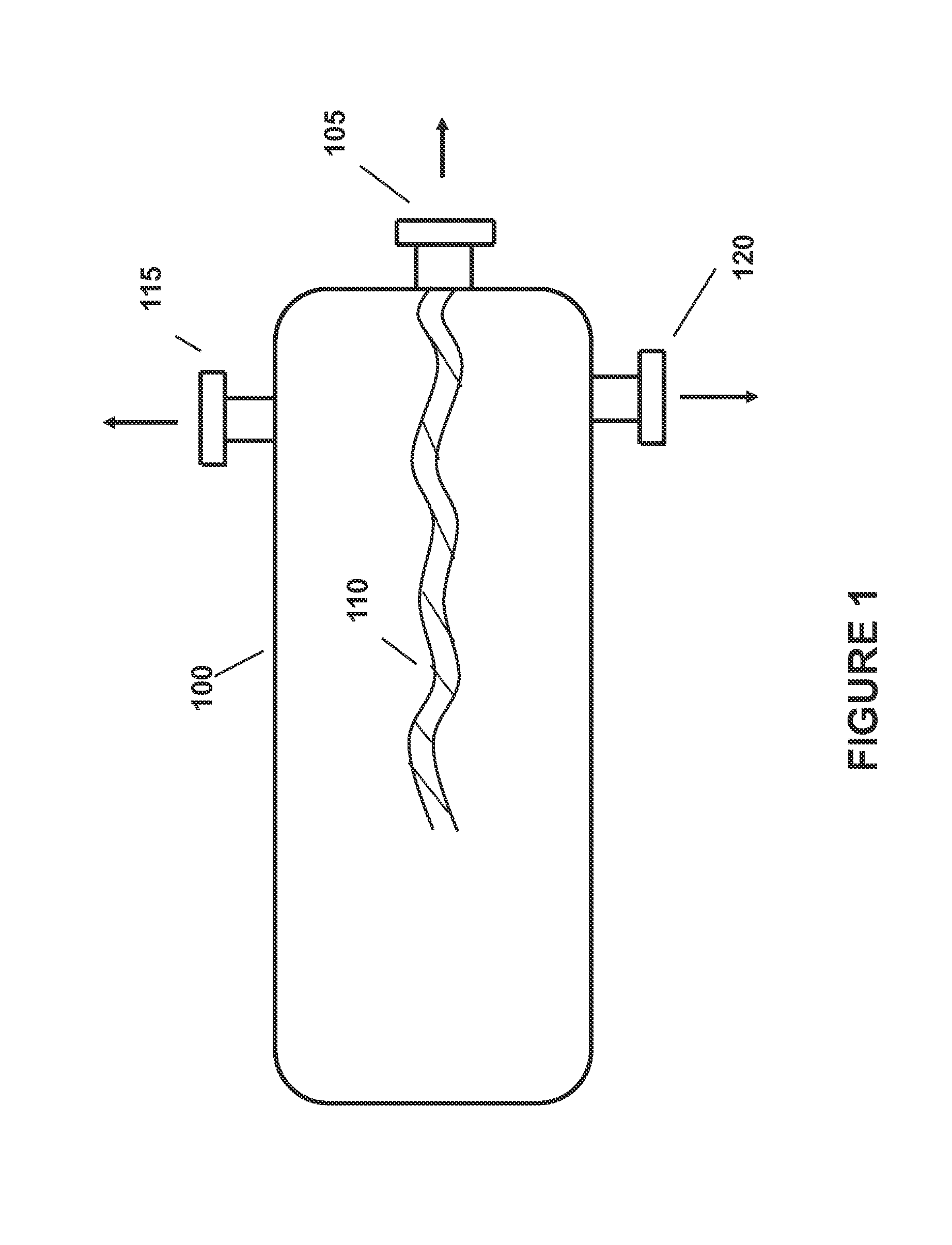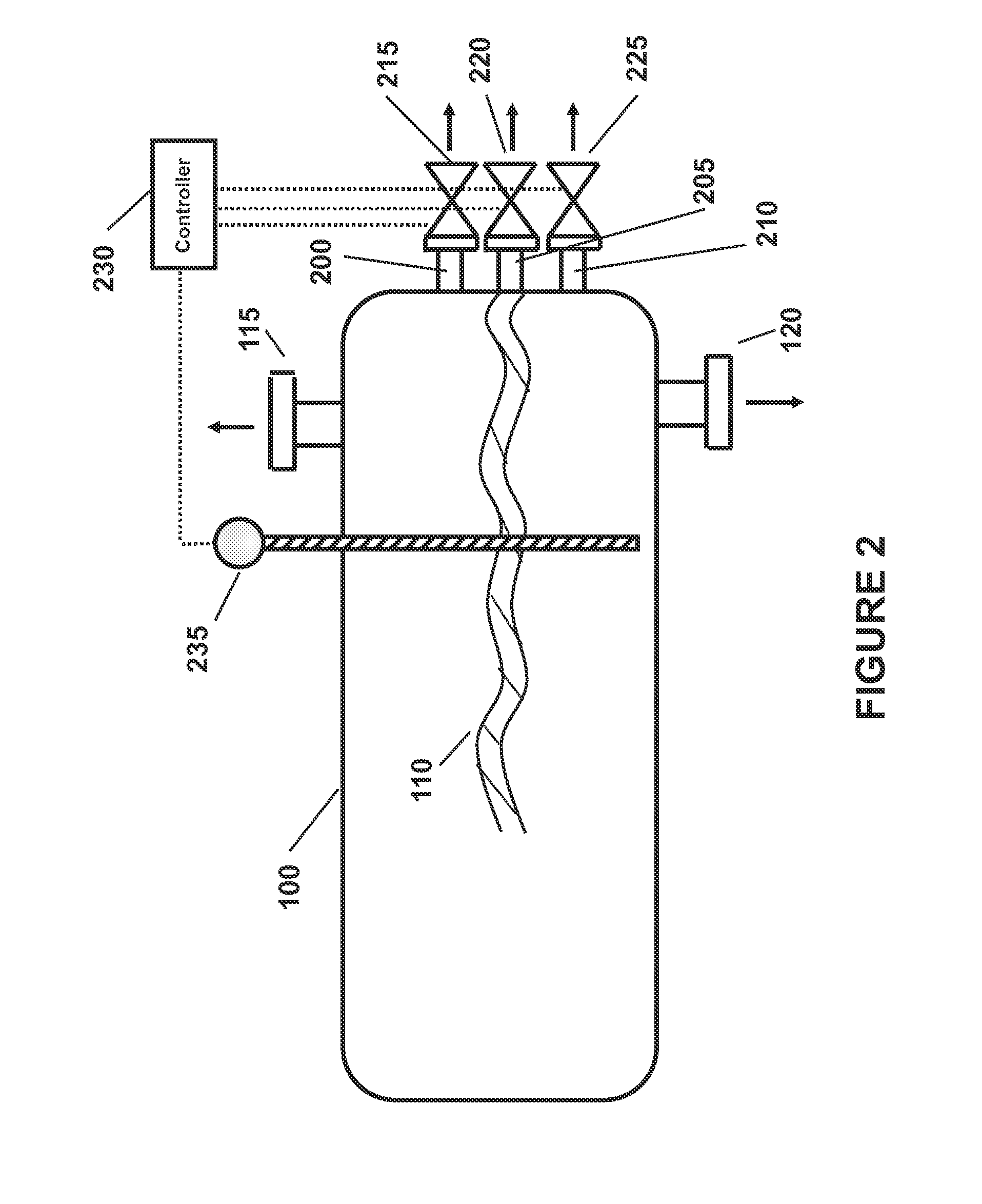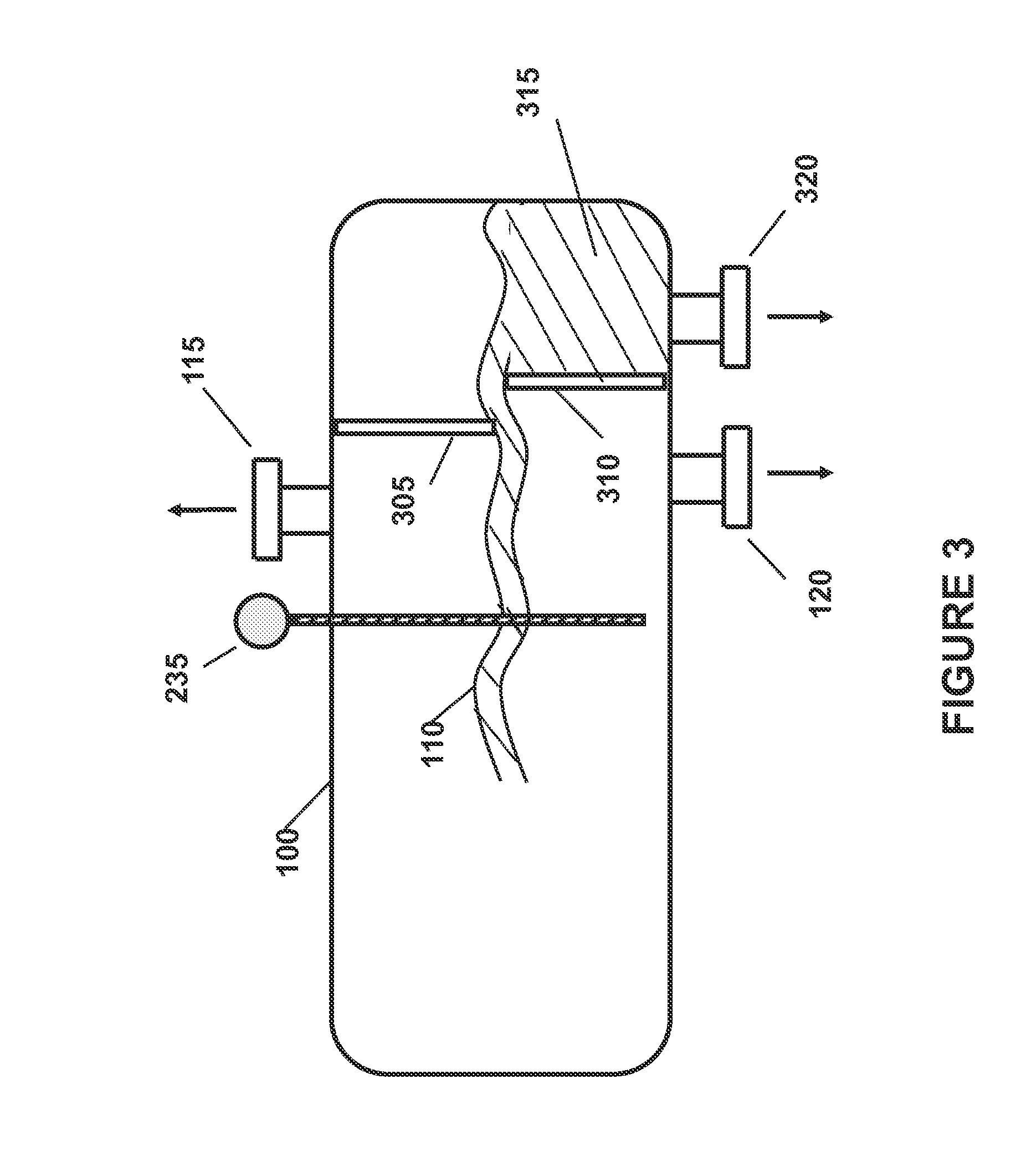Alkali Metal Hydroprocessing of Heavy Oils with Enhanced Removal of Coke Products
a technology of heavy oil and enhanced removal, which is applied in the treatment of hydrocarbon oils, hydrocarbon oil treatment, and plural serial refining stages. it can solve the problems of difficult removal of sulfur, high cost of hydrogen consumption, and inability to facilitate selective removal of coke contaminants. , to achieve the effect of simple, low cost and efficien
- Summary
- Abstract
- Description
- Claims
- Application Information
AI Technical Summary
Benefits of technology
Problems solved by technology
Method used
Image
Examples
example
[0104]In this Example, thirteen (13) lab scale experiments were made reacting to potassium salts (either KOH, K2S, or combinations thereof) with a bitumen at conversion reaction conditions and then allowing the liquid reaction products to separate. The experiments herein involved the thermal cracking of bitumen derived oils in the presence of either KOH or K2S. The laboratory work was conducted in a stirred tin bath autoclave at reaction temperatures from 600° F. to 800° F. (typically 700° F. to 750° F.). These reactions were run under a continuous flow of hydrogen, with a hydrogen partial pressure of typically 1000 psi. These reactions were conducted with 100 g of heavy feed oil and various amounts of K-salt. The reactions were run at reaction times up to several hours (typically about 30 to 90 minutes). At the end of the reaction, the products were first physically removed from the reactor and then the remaining was removed by solvents. The process demonstrated 1050° F.+conversion...
PUM
| Property | Measurement | Unit |
|---|---|---|
| temperature | aaaaa | aaaaa |
| boiling point | aaaaa | aaaaa |
| boiling point | aaaaa | aaaaa |
Abstract
Description
Claims
Application Information
 Login to View More
Login to View More - R&D
- Intellectual Property
- Life Sciences
- Materials
- Tech Scout
- Unparalleled Data Quality
- Higher Quality Content
- 60% Fewer Hallucinations
Browse by: Latest US Patents, China's latest patents, Technical Efficacy Thesaurus, Application Domain, Technology Topic, Popular Technical Reports.
© 2025 PatSnap. All rights reserved.Legal|Privacy policy|Modern Slavery Act Transparency Statement|Sitemap|About US| Contact US: help@patsnap.com



